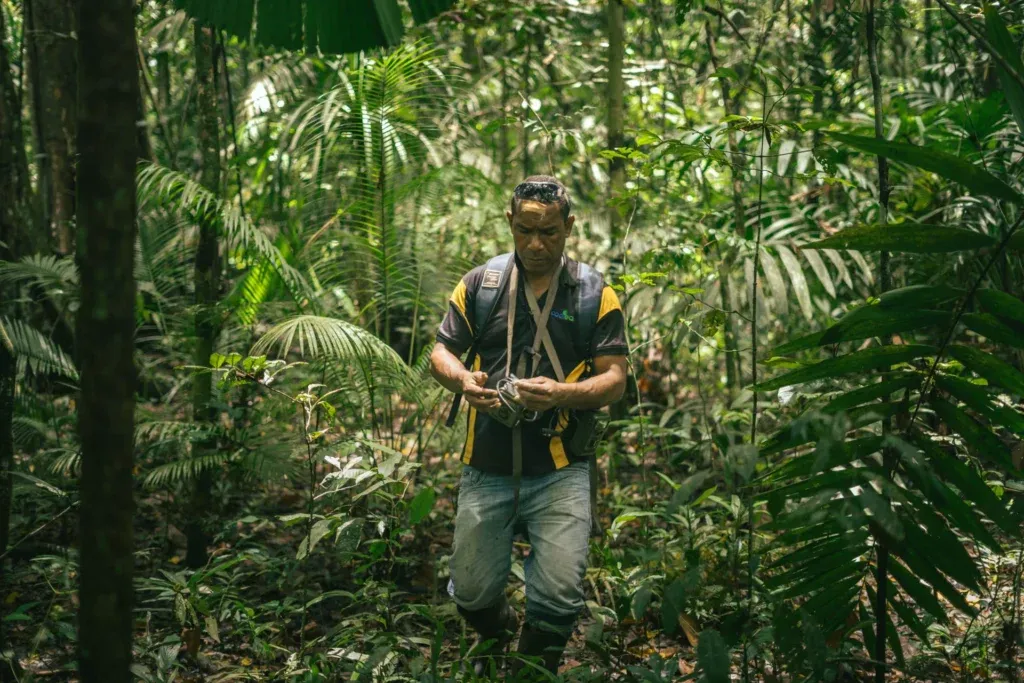Charity Report: Cool Earth


- Background
- The Charity: Cool Earth.
- The Problem Addressed: Climate change/logging of rainforests.
- Interventions: Supports communities living in rainforests being logged with a steady income stream and resources.
- Donations: Yes.
- Effectiveness of Charity: Somewhat equal to cash transfers: 3.
- Quality of Evidence for Effectiveness: Some transparent data but not rigorous: .85.
- Final Evaluation: 2.55 stars out of 5.
‘Cool Earth’(CE) is a non-governmental charity organization founded in 2007. It was founded and is based in the UK, but has an area of focus in other nations that have rainforests with native inhabitants. CE is a ‘forestry charity’ focused on combating climate change through helping maintain current rainforests. CE’s axis, however, is more oriented to the economic and racial problems ailing indigenous communities, rather than forestry itself. CE affirms that this makes their programs a win on both fronts: climate change prevention and support for an oppressed community most affected by it. This supposed killing of two birds with one stone has been the doubly-effective praxis that has brought CE a great ethos among sustainability-oriented charities.
CE advocates for and supports various rainforest's indigenous communities through effective conservation strategies, which it does by providing resources, expertise, and/or cash transfers– all bundled up in what they call programs. The notion is that an strengthened local economy, mainly brought upon by a basic income stream and various provisions, enables the building of sustainable lifestyles within the rainforest, better schools, medical centers, and monitoring and confrontation of illegal logging. It is not just illegal logging that is a problem, as native communities may need to rely on outside sources to provide financial support in exchange for logging rights. CE’s central goal is to support and back the communities that inhabit encroached rainforests, and as a result maintain the rainforests they inhabit. CE’s praxis is supporting and funding indigenous communities in rainforests as a solution to the logging of said rainforests, in effect ‘storing carbon’.
According to CE’s collection of trustee reports, since 2018 CE has spent a total of 19.8 million pounds (25 million USD) on expenditures. CE is not very transparent on any financial reports from before 2018, and most data provided and work done has also been recorded post 2015, or through outside sources. CE usually spends around 2-3 million pounds on expenditures; in 2023 this spiked up to over 6 million. Every pound under possession is accounted for and transparently conveyed to the public. In 2023, for every pound they spent on fundraising, they raised six pounds in return, fundraising and individual donations making up 13 million pounds of the total funding since 2018, making CE very donor reliant. CE does not make an effort to differentiate between repeat donors from a previous year or donation as a result of fundraising. CE is an NGO but receives funding from governmental analogous funds in the UK.
CE is very transparent with the evidence they have gathered relating to preventing deforestation, providing lots of direct data on the site and in annual and trustee reports. CE provides statistics such as 136 million trees saved and 243 tonnes of carbon stored, and this is all done through means that empower indigenous communities. This forestry evidence has been collected at high standards, but is only self-reported. If correct, the evidence would make CE one of the most if not the most effective climate charities. Other charities on average spend 10 USD per tonne of carbon, while CE would optimistically spend around a dollar. Unfortunately, no matter how great the quality of evidence CE has on its own rainforests, this evidence alone is not enough to account for the entire extent of CE’s holistic impact.
Although CE has shown great evidence for its positive effects among the various microcosms of indigenous communities, the quality of evidence falters when it comes to the aftereffects that CE is hoping to achieve as well. CE differs from many other forestry charities, as it prevents trees from being logged, rather than planting new trees. The trees that are planted by other charities are (usually) not simply replanted from another location. What is being displaced are seeds, water, and resources from charities and their donors unto untapped lands. However, CE’s level of displacement may be of pre-existing trees itself. Indeed, there is a great quality of evidence that CE stops logging from occurring at their project’s locations, however there is little evidence showing that this doesn’t just displace logging onto another rainforest.
CE is aware and has responded to these implications, and they affirm that their projects at a maxim prevent logging, however this only holds water in small region-based logging companies. In places such as Peru, the palm oil logging industry present there is multi-national, and most likely will be largely unphased by CE’s efforts. This can be made even worse, as CE does pull out of certain nations, whether it be due to political reasons or they are ‘done’ with the project in the region, and logging may simply reoccur, making it now only a delay.
CE does to a great extent help indigenous communities, which are one of the highest impacted communities both by climate change and discrimination. However the quality of evidence, or rather lack of evidence, of CE’s secondary and arguably main objective gives CE no merit on the holistic sustainability stage. Who can know for sure if they have really stopped logging on a pseudo-systemic level, or if it has simply been temporarily displaced. Or perhaps CE takes on the route of lesser evil politics, where it is nonetheless a net positive to have loggers move from rainforests that act as indigenous communities to unoccupied rainforests. This is rather representative of CE as a whole, as instead of enacting a sort change upon the system that facilitates or even incentivizes the logging of rainforests, it simply applies status quo band aids to the victims of contemporary systems.
CE gets three out of four stars for effectiveness of charity, making it equal but not synonymous to cash transfers. This is due in part that CE does partially engage in cash transfers themselves to indigenous communities, and their excellent fundraising efforts may turn a dollar you donate into six. CE’s effectiveness in climate is currently unknown and precarious, possibly making it a one star in effectiveness, however the support and cash transfers for the indigenous community and fundraising efforts brings it to a baseline of three stars. CE has no external randomized control trials of any sort for either carbon emissions or indigenous welfare, which when applied holistically may have helped with knowing whether CE was actually having a global net positive impact. They have a good quality of evidence for their impact in indigenous communities within their projects, however the complete lack of oversight on external logging factors gives CE a quality of evidence multiplier of 0.85; transparent but lacking. This gives CE a final evaluation of 2.55 stars.
References
Halstead, John. 2018. “Climate Change Cause Area Report.” : www.founderspledge.com/downloads/fp-climate-change.
“Cool Earth.” n.d. https://www.givingwhatwecan.org/reports/cool-earth#2-what-do-they-do.
“New Rainforest Lab in Papua New Guinea.” 2024. Cool Earth. March 20, 2024. https://www.coolearth.org/news/new-rainforest-lab/.
“Forest Monitoring.” n.d. Cool Earth. https://www.coolearth.org/radical-solutions/forest-monitoring/.
“The Queen's Green Canopy” | The Royal Family. https://www.royal.uk/the-queens-green-canopy-0
“IMPACT REP0RT.” 2022. https://www.coolearth.org/wp-content/uploads/2023/06/Cool-Earth-Annual-Review-2022-2023.pdf.
“Impact..” n.d. Cool Earth. Cool Earth's Impact on Rainforest and Climate
“IMPACT REP0RT.” 2018. *191213-CE-Annual-Review-2018-2019.pdf (coolearth.org)
“Impact.” n.d. Rainforest Alliance. Accessed March 28, 2024. https://www.rainforest-alliance.org/impact/?_ga=2.108532034.1556943879.1711477515-1791406017.1711477515&_gl=1.
“Why We Have Over-Rated Cool Earth - EA Forum.” n.d. Forum.effectivealtruism.org . https://forum.effectivealtruism.org/posts/RnmZ62kuuC8XzeTBq/why-we-have-over-rated-cool-earth.
“Why Palm Oil Is Still a Big Problem” - The New York Times (nytimes.com) https://www.nytimes.com/2024/03/26/climate/why-palm-oil-is-still-a-big-problem.html
“Past Partnerships.” n.d. Cool Earth. https://www.coolearth.org/why-we-exist/where-we-work/past-partnerships/.
“Devastating Rights Violations against Indigenous People Must End | UN News.” 2023. News.un.org. July 17, 2023. https://news.un.org/en/story/2023/07/1138782.
Andrew Herscher, “Architecture and Refugee,” in Displacements: Architecture and Refugee (Berlin: Sternberg Press, 2017), pp. 1-12.
Elise Iturbe, “Architecture and the Death of Carbon Modernity,” Log 47 (2019), pp. 10-23.
This was citated originally in the Chicago style. For footnotes, see original:

